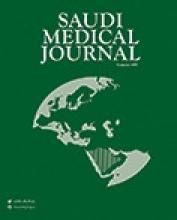Abstract
There is worldwide concern on the spreading pandemic wave of the new swine influenza virus (S-OIV). The WHO has placed the pandemic threat alert to level 6. World leaders and scientists importantly stress that regulations and pandemic preparedness may lower the morbidity and mortality. This review describes the background, origin, epidemiology, signs and symptoms, methods of detecting H1N1, the risk of H1N1 pandemic control plans, immunity to H1N1, vaccination against H1N1, hospital management, patient management, and treatment of symptoms. It also describes in considerable detail the responsibilities of health professionals in navigating the complex areas of laboratory diagnosis, patient isolation procedures, and how to minimize and manage any accompanying staff infections, all of which are vital processes to help mitigate and minimize the seriousness of local and national de-novo outbreaks of emerging H1N1 infection.
- Copyright: © Saudi Medical Journal
This is an open-access article distributed under the terms of the Creative Commons Attribution-Noncommercial License (CC BY-NC), which permits unrestricted use, distribution, and reproduction in any medium, provided the original work is properly cited.






